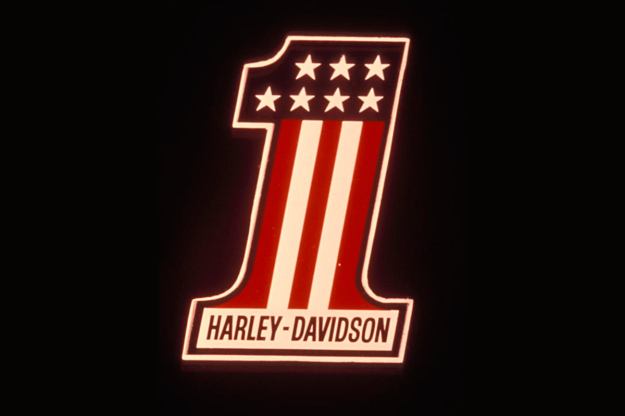
A few days ago, motojournalist Jason Cormier published a hard-hitting critique of the current custom motorcycle scene. At 4,000 words it’s a long piece, but also a very interesting read. With Jason’s permission, we’re republishing it here.
The whole concept of authenticity (and what is or is not authentic) is one of those paradoxical topics that seems simultaneously important and utterly trivial. The term serves as an accusation/accolade directed at whatever fad du jour is grabbing the attention of the public, but it seems to be a product of our recent cultural aspirations.
The whole business of following our passions, aspiring to greatness, and generally expecting the best for ourselves, no matter how lazy or shiftless we are, is a recent development that has enveloped our culture.
To lack authenticity is to contrive against some notion of “true” passion—or worse, to debase those passionate pursuits with monetary concerns. To exhibit an idealized form of authenticity is to be in tune with your loves and desires without corrupting them with rationality or materialism. Upon reflection it’s all a bit ridiculous, but bear with me, I’m sure I have a point brewing here somewhere.
This societal push for everyone to live out his or her dreams (or forever live in despair because they failed to do so) is a recent development that doesn’t seem to have much precedent. Our highly networked, highly public culture places high value on success, the trappings of wealth, and some vague pursuit of happiness; our constant monitoring of each other’s progress inspires greed, jealousy and the sort of beating-the-Jones-into-submission dick-waving that would make our ancestors cringe.
And that’s what makes it seem all the more ridiculous—did our great-great grandparents aspire to pursue their dreams? Did they tell their children that someday they could be anything they wanted to be (but today they needed to pick rocks out of the soil)? Did bean farmers in Iowa sit on their porches and gaze wistfully into the sunset, wishing they could abandon their earthly responsibilities to pursue their “passion”?
Probably not. They farmed dirt like they had for generations, and pursued the only life they knew. Those who aimed higher would either make their fortune with luck and hard work, or get browbeaten back into submission for being so vain as to aim above their lot in life.
This pursuit of irrational desire has bred a multitude of curious trends. We live in a material culture that places high value on things, with some objects having more monetary and philosophical value than others based on their construction, performance and the ideas that inspired them. We have gone beyond the realm of mere functionality; now we judge objects by their moral and conceptual backgrounds.
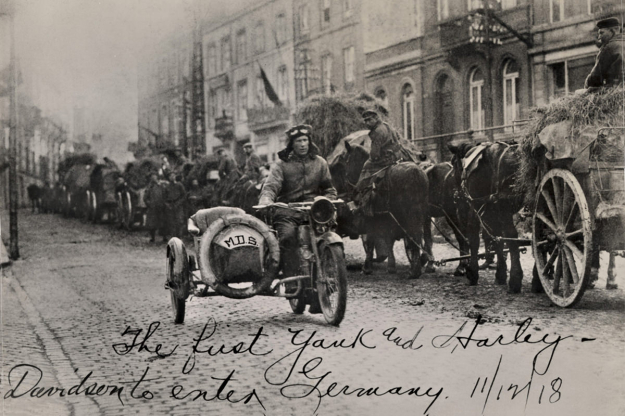
High value is placed on that which is honest and born of true workmanship (whatever that is)—be it coffee, clothes or motorcycles. We’ve come to romanticize the notion of honest labour, of some selfless pursuit of perfection in materialism crafted by scarred hands and inspired by hard-won experience. And in lieu of actually living this honest life, you can buy it—the products, the image, and the ideals are all up for grabs if you have the money and the poor sense to fall for the hype.
I’ll digress a bit and attempt to return to the core of this discussion, and what matters to me and my readers – how do these notions of authenticity impact on our modern motorcycle industry?
Motorcycling as a whole has seen a strange series of ups and downs over its short history, a series of failures and rebirths that have built a curious mythos that is as complex as it is contradictory. In Western society we’ve witnessed the transition of motorcycles from being cheap forms of transportation to status symbols and recreational items. They’ve flickered in and out of respectability repeatedly over the decades, building an image of grace tempered with a tinge of outlaw culture.
We reference our past and play dress up with the trappings of bygone groups, putting on pageants of leather and chrome and noise that are as much the product of marketing as they are an a contrived expression of “individuality”. We conveniently ignore the elements of our history we dislike, and parade around in references to the bits we chose to glorify. Our culture is a constantly evolving pastiche of disparate elements stitched together into some virtually incomprehensible mess that is scarcely decipherable to those outside our world (and quite a few of us inside it).
In cultural terms we’ve appropriated elements of the past without understanding them, building monuments to nostalgia and tradition without substance. We have trouble moving forward as a result. Conservatism reigns and we distrust the new. We stick to the formulas and keep building bicycles with engines strapped to them without accepting meaningful progress. At the end of the day image trumps engineering.
It isn’t all bad. There is something to be said for machines that channel a genuine spirit. As much as I may disparage the paint shaker-cum-transportation rolling out of the Milwaukee, I have a begrudging respect for their single-minded pursuit of an ideal. Harley-Davidson is, all marketing aside, the only authentic cruiser. It has an unbroken lineage that has survived depressions, recessions, wars, and image problems, a purity of antiquated design that respects its heritage—aberrations like the V-Rod (below) and Street 500/750 aside.

The company can draw a nearly unbroken line from the present to its origins, and its products exhibit the hallmarks of the company’s past in a way that somehow doesn’t fall completely into the trap of creaky nostalgia. If we ignore the brash and contrived commercialism and zero in on the machines themselves, there truly is no substitute for a Harley. To attempt to copy a Harley is to commit the ultimate sin: to build something that is at its core a sham, a shameless knockoff that exhibits all the elements of the original with none of the heritage or spirit intact.
The Japanese marques are notorious for this. They analyse, copy, and conquer. The product may be superior in rational terms of performance, value and reliability, but it has no cultural value. It is an attempt to lure sales away from an established niche, to build a by-the-numbers facsimile. It is not authentic.
The Japanese are at their best when they are given the freedom to establish a new category, to build something distinct and advanced that doesn’t reference the competition. Modern sport bikes and standards owe their existence to the arms race instigated by the Japanese in the 1970s and 1980s that propelled design and performance forward at a remarkable pace. We should celebrate the birth of the superbike and the refinement of the modern motorcycle brought on by the strength of Japanese engineering, not the oil-tight copies of British twins and goofy Harley clones that cluttered showrooms for decades.
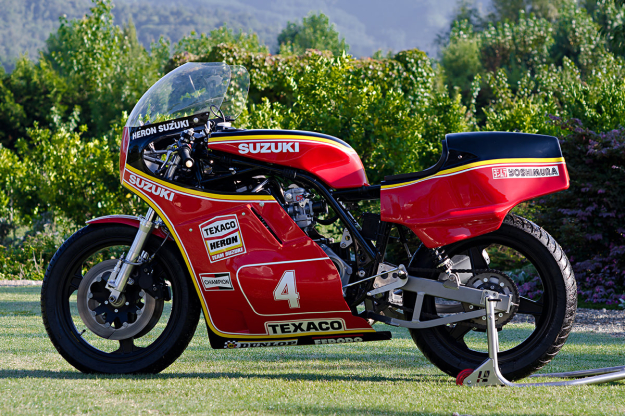
There is a paradox in there somewhere, or perhaps a trap that can easily lure in the clueless followers of fashion. We place value on that which is true and pure, but which upholds an outdated standard, and we end up sitting in place and stagnating. Laziness is not authentic. Neither is grimly hanging on to past glories without looking to the future. There is a fine line between honouring your heritage and clinging to old successes.
I’m as much as a sucker for the idealized, Peter Egan-esque notion of the bygone purity of the old as anyone else. There is an appeal to the image of sitting in the corner of the garage, swigging a dark beer and gazing upon some antiquated machine that is visibly hewn from metal by human hands as it plinks itself cool following a hard day’s ride. There is a spirit in these old barges that comes through with every ride, a personality that oozes out and puddles on the concrete of the garage floor along with so much straight-weight oil.
The trick is to appreciate this old world character without remaining a slave to it. Old machines will always be there; there is no need to recreate them. And most of those old machines were never harking back to some past ideal—they were products of forward-thinking designers, and were contemporary in their design and performance when they were current. What compels us to build homages to the past, when the subjects of those homages were the result of looking to the future?
There is also the problem of missing the point of those old cafe racers and stripped down bobbers. They were products of purpose. Their aesthetics were a result of the desire for more performance, less weight, and simplification. Their builders were not deliberately trying to channel any particular “look”: that came naturally from the pursuit of performance.
The modern cafe racer is merely a pretender, an attempt to replicate the appearance of this purity of construction without the substance. Yes, I’m deliberately drawing a parallel to the soulless Japanese copies of Harleys. That being said, there is a place for deliberately hack-n-slash “engineering”. It should not be presented in overwrought, high-minded terms cooked up by arts degree arrogance, attempting to channel some nonexistent spirit of rebellion (by doing the same thing everyone else is doing). They should be fun, self-deprecating romps like the Dirtbag Challenge.
I would argue that the British lost the plot after the collapse of their motorcycle industry. Norton was able to shamble along and renew itself with a series of remarkable rotary powered machines for a brief but interesting period, but all the other storied marques were obliterated following the arrival of the Japanese conquerors, despite a few admirable attempts to modernize right before the end.
While Harley was able to cash in on its legacy early on, and sustain itself through the Eastern onslaught and AMF bungling, the British saw their industry crushed and buried before a revival could take place. John Bloor’s resurrection of Triumph has been an undeniable success, but it has earned that success through bastardization of the company’s legacy. The 1990s were an interesting period where the company moved forward with a series of unique and charming triples and fours (1990 Daytona 750 shown below). Then they shat out the Bonneville repop in 2001.
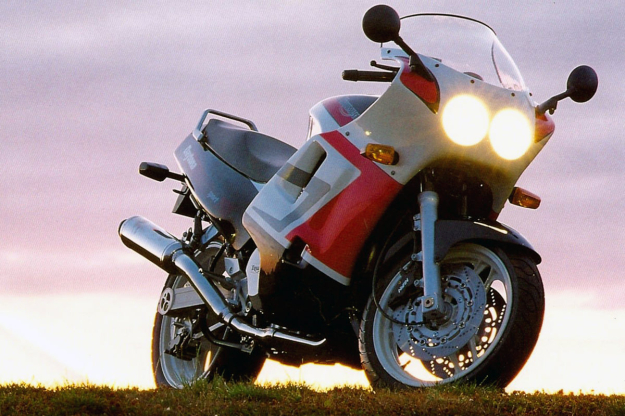
History had come full circle—the Japanese had beaten the competition by building soulless copies of British machines, and now the British had copied the Japanese by building a soulless homage to their own past. Union Jack decals distracted buyers from the “Made in Thailand” and “Made in India” stamps on components. The “new” Bonnie was (is) as British as Tom Kha Gai. Reliable and plodding, with boring performance and wobbly roadholding, it was a far cry from the fine handling and snarling engines that propelled Brit iron into the hearts of riders in the 1950s and 60s. But the facsimile was good enough at 20 paces to lure image-conscious buyers into the fold, by pandering to their nostalgia without offering any real substance. It may well have been a Kawasaki W650, a bike that arguably recreated the spirit of the original better than the new Bonnie ever did.
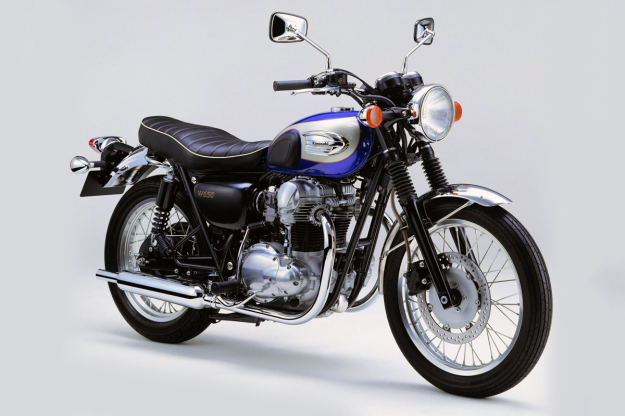
The Bonneville became the prototypical nouveau classique motorcycle, a runaway success that spawned a series of equally uninspired rehashes from other marques (see also: Moto Guzzi V7, Honda CB1100, or any other machine that excuses lazy design and mediocre performance by appealing to our limitless capacity for nostalgia).
The resulting me-too hopping on the nostalgia bandwagon has done irreparable harm to modern motorcycle design. Where we once looked starry-eyed into the future aboard our sleek pastel-coloured rockets, we now look wistfully upon a past that never was while straddling wheezy appeals to the sentiments of baby boomers and their self-entitled hipster brethren.
In the process you end up with weird compromises, like the new BMW R Nine T abandoning the clever Telelever front fork in favour of a non-adjustable conventional fork to make “customization” easier. No, it wasn’t to save costs and glean some extra margin, it was to give 1% of buyers the opportunity to swap in some better suspension components they will never come close to making use of. Accommodating the whims of fickle buyers forces a step backwards.
Which allows me to segway neatly to my next target:
Our current industry has managed to combine the wistful longings of senile buyers, the muddled self-images of materialistic self-entitled brats, and the myth of honest labour into a cocktail that has given birth to the second coming of the café racer. Every wrench-spinning hack and their grandma has taken to the shed to build a cobbled together monstrosity as the custom scene has exploded into an orgy of candy-flaked, header-wrapped, Firestone-tired homages to … who knows what, they were too busy selling T-shirts and moustache wax to decide.
We have appropriated elements of the past and given them the glossy sheen of branding and rampant materialism, thereby abandoning any hope of contributing something meaningful to our culture. We will never exhibit that effortless cool of our heroes because we are trying too hard, and trying hard to make a buck in the process. Anyone who dares summon the spirit of McQueen (or Brando, or Marvin, or Eastwood, or Newman, or any other grizzled American male celebrity) in their marketing should be avoided at all costs. Beware the Steve McQueen/David Hasselhoff Conundrum.
That’s not to say that numbskulls slapping together deathtraps in their backyards is a bad thing. As long as young men and women have had hacksaws and cheap Mastercraft tools at their disposal, they’ve been butchering two- and four-wheeled devices to their perverted liking. Hot rod culture is alive and well, despite the arrival of the Prius and the NC700, and the naïve tinkering of our youth should be celebrated and encouraged—no matter how ugly it gets.
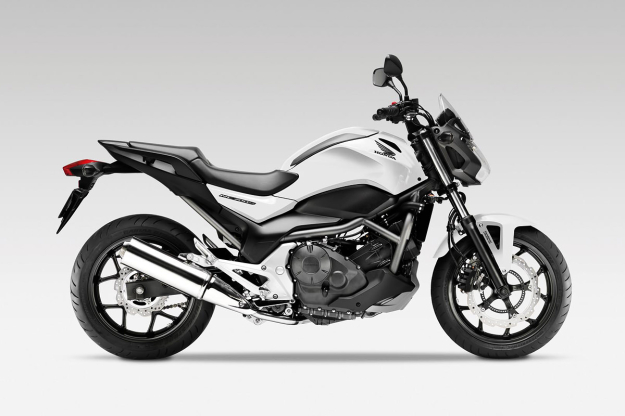
It should not, however, become commercialized to the point of ridiculousness. That is the difference between the authentic custom and the contrived machinations of businesses masquerading as honest builders. If they are churning out overpriced machines while selling made-in-China bolt on parts, and overpriced apparel with explicit references to Steve McQueen, they are not worthy of our praise. Save your accolades for the person with blackened, calloused hands who lives in poverty, funnelling all their meagre funds into their projects. You likely won’t hear about those people in the media, because they generally neglect to hire publicists or submit their work to Bike EXIF.
That’s the unfortunate and largely untenable ideal we have built, that of the passionate builder plying their trade free of corruption by monetary concerns. The myth of honest labour has merged with the image of the starving artist. The truth is that the most notable visionaries usually toil in obscurity, and always will. Their potential will always be limited by their lack of funds and their impact will be blunted by their lack of exposure. Noble though their plight might be in an idealistic sense, they can rarely achieve greatness or improve our culture if they are working in anonymity with limited means.
A select few rise to the top and get the breaks that allow them to soar, but most will suffer Ramen noodles and cheap beer while they skin their knuckles on their latest creation. It is a romantic image, but not a pleasant one to live through.
I once liked the whole aesthetic and do-it-yourself mentality that surrounded the rebirth of the café racer—and its American cousin, the chopper, which is equally a victim of a series of deaths and renewals that have tarnished the spirit of the original concept.
I became disillusioned when I visited the “Ace Café Corner” at the Barber Vintage Festival in October 2013. I paid extra to gain entry (which should have been my first sign of trouble) into what promised to be a cornucopia of expressive custom machines and a gen-u-ine recreation of the fabled Ace Café. What I got was a bunch of similarly-butchered Honda CBs with gaudy paint jobs and a concession tent that was identical to the dozen other food trucks that dotted the grounds, except this one served overpriced beer in addition to the cardboard pucks they passed off as burgers.
Various businesses plied their cheap wares in this “private” area, with everything from Chinese rearsets to coffee mugs on offer to the crowds of bearded, be-flannelled millennials. It was pathetic and disheartening. Bar a few original machines and an entirely out-of-place display of original Brough-Superiors, the whole scene left me cold and feeling cheated out of my admission fee. I had felt the cafe-racer image had jumped the shark some time prior, but seeing this pathetic display made me realize I truly disliked where our once vibrant custom scene was heading.
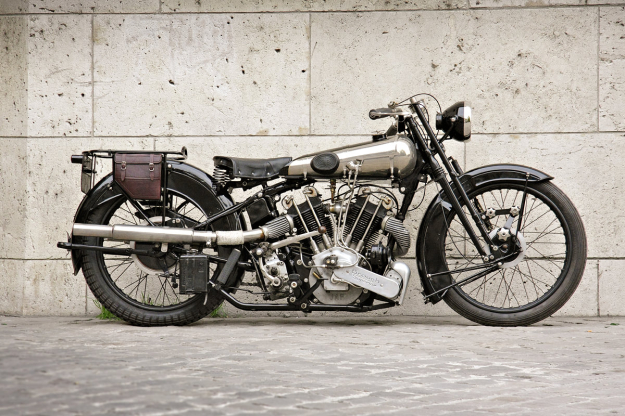
In my mind, true authenticity is born of a purity of purpose and design. The most notable machines are those that execute an idea with minimal compromise. They are pursuits of a focussed goal, of a certain truth. They are unapologetic. In terms of mass-produced machines, the Italians have made their mark building beautiful and uncompromised tributes to mechanical art, and that’s why I continue to ride and lust after Italian machines against all good sense. If I could only ride Bimotas for the rest of my life, I’d die a happy man.
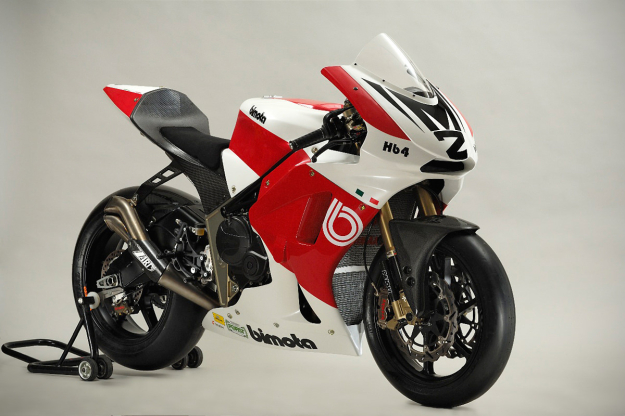
If I wanted something boring, comfortable, and easy to ride in traffic, I’d buy a scooter—or literally anything other than a focussed machine that makes no excuses for its performance. If someone hops on a lithe, visceral monument to man’s hubris and proceeds to nasally complains about how hard the seat is, or the lack of fuel capacity, or how the gearing is tall for stop and go traffic, they need to be immediately barred from ever riding anything more exciting than a Burgman.
The most egregious offenders to our sense of authenticity, wobbly café hoppers aside, are those that are borne of compromise and design by committee. Elements are dumbed down to suit cost-cutting, the bullying of environmental agencies, and the fickle demands of mouth-breathing consumers who are too busy looking for places to bolt a cupholder to notice how perfectly shaped the subframe support is.
More recently the concerns of liability issues in the North American market has driven many manufacturers to abandon anything remotely novel for fear of some dolt tipping over in a parking lot and then suing the company because they didn’t explicitly inform him via orange warning labels, audible alarms, and flashing lights that he shouldn’t ride with the sidestand deployed.
This exposes the core problem with our industry—we rely too much on the opinions of ill-informed potential buyers who are happy to disparage anything new and unusual. We are constantly forced to look backwards, to accommodate the whims of customers who refuse to accept anything unfamiliar. The classic retort of “I wouldn’t buy that” echoes loudly whenever something unusual is presented to the public, despite any attempts to demonstrate that those whiners were never the intended buyer (or that they wouldn’t have the opportunity to buy it even if they wanted to). People forget that the world doesn’t revolve around their whims. They don’t realize that their opinions limit progress, and that not liking something doesn’t lessen its value or its impact on the world.
The most notable projects outside of mass production are those built by the geniuses, tinkerers and cranks who dare to reject the norms and traditions of our otherwise conservative industry. These are the machines that often shock and inspire but are rarely well known outside of a few circles of discussion.
James Parker might be one of the best known designers of weird and wonderful alternatives given his infamous association with Yamaha and the GTS1000, and JT Nesbitt continues to buck convention in the most beautifully subversive manner from his workshop in New Orleans, but for every well-known odd bike designer there are a dozen unknown visionaries toiling away beneath the public’s radar—people like Tony Foale, Ian Drysdale, and Julian Farnam to name a few.
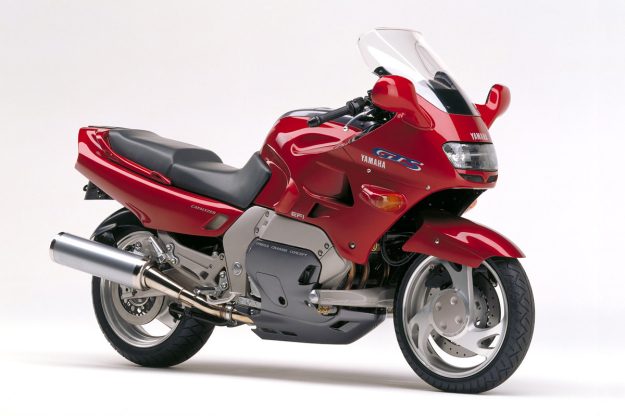
They produce the best kinds of motorcycles: bikes that draw the ire of the shortsighted individuals weaned on boring appliances. If a machine is radical enough to inflame and enrage the conservative tendencies of all the yokels who gaze upon it, you know you are doing something right.
The commercialization of racing and pushing the cost of entry into the stratosphere has contributed to this relegation of innovation to backyard tinkerers. No works team is willing to bet the farm on some quote-unquote “unproven” technology, and sanctioning bodies would be waiting in the wings to ban any progress if a development proves advantageous. A few small teams bravely try to do something different but are limited by their modest means and their lack of support. The era of the privateer racer/mechanic building and racing his own machine (and remaining competitive) is long gone. Racing is so expensive, so complicated, and so heavily regulated that the individual scarcely has any hope of contributing any meaningful technological progress to the sport.
Nevermind that entire subsets of the industry have grown to accommodate the status quo. A good example is tires. Builders who have attempted to race with alternative front suspension designs have discovered that they are severely limited by tire performance—by separating braking, suspension and steering forces (which are typically muddled together by the action of telescopic forks) you reduce stress and friction on the tire, which leads to less grip because the tire can never maintain a sufficient temperature to perform properly.
Tires are designed with telescopic forks in mind, and there is nothing out there that will exploit the potential of a forkless front end. This leads to exasperated ideas of internally heating the tires, or directing exhaust heat towards the tread, or anything that will allow a forkless suspension to perform properly in racing. Accommodating the compromises inherent in motorcycle design leads to a vicious circle that sustains those compromises.
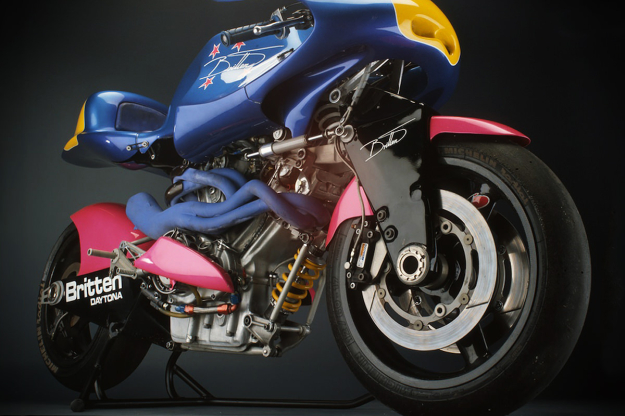
They say racing improves the breed, so long as the breed is backed by billions of dollars and doesn’t deviate too far from the formula laid out in the rulebook.
Several designers I’ve spoken to lament that the problem of rampant conservatism doesn’t seem to have the same hold on the automotive industry as it does in the motorcycling world. In automobile design and engineering, progress seems more rapid, and radical ideas are often celebrated rather than viewed with all-damning skepticism.
Engineering solutions to problems are more natural—few in the automotive realm would accept the compromises of a telescopic fork when a better system could easily be designed. There could be many factors at play. Some think that the hidden nature of much of the engineering allows more experimentation—nobody will complain about how a suspension arm doesn’t look right when it is shrouded in bodywork. It might be also due to the financial aspects—a top tier car is aimed at an elite few who expect perfection, while even the most expensive motorcycles are still within the grasp of the upper middle class who seem to be far more fickle in their desires (and always willing to make unfair comparisons to cheaper mass-produced machines).
Time to digress again. I’ve meandered away from the original point of this editorial. Where does this all play into authenticity and passion? Does it really fucking matter? The problem with our industry as a whole is that we have become too preoccupied with defining what is and isn’t worthy of our attention.
In the meantime we’ve lost sight of the innovation that’s been brewing right beneath our noses. No, not those hipster dipshits wearing bubble visors and concocting new and creative ways to cut up their subframes. They are a mere distraction, a trend/fad that has been latched upon by the media and profiteers looking to cash in on what should otherwise be a pursuit of progress tempered with passion. You won’t find meaning in half-baked tributes to Steve McQueen or glossy photoshoots of models failing to look rugged in the saddle of some rolling throwback to a past that never existed.
True authenticity, in my mind, is the quest for purity in design, and unchecked innovation in the face of daunting conservatism. The people who should be conquering this industry are working in isolation and anonymity. It’s a damned shame that you’ve likely heard about Wrenchmonkees or Classified Moto but don’t know who Tony Foale is.
Of course I’m being harsh. I should probably avoid wholesale categorizations and unchecked disdain, but in general the priorities of our current motorcycle industry have left me frustrated. The man/woman in a shed building a bike has tremendous value to our culture, no matter how contrived their inspiration might be. They deserve praise and don’t deserve to be caught in the tides of fickle fads or transparent marketing. If they keep hacking and chopping, they might someday find the inspiration that will carry them toward building a meaningful contribution to our sport. Or they might keep cobbling together noisy deathtraps ad nauseum.
Who cares? It doesn’t make a difference. My hyperbolic opinions shouldn’t stand in the way of your innovation/butchering, just as the vocalizations of a slack-jawed consumer base shouldn’t stand in the way of progress in our industry.
As they say, “The views expressed by this author do not necessarily reflect those of Bike EXIF.” What’s your take?